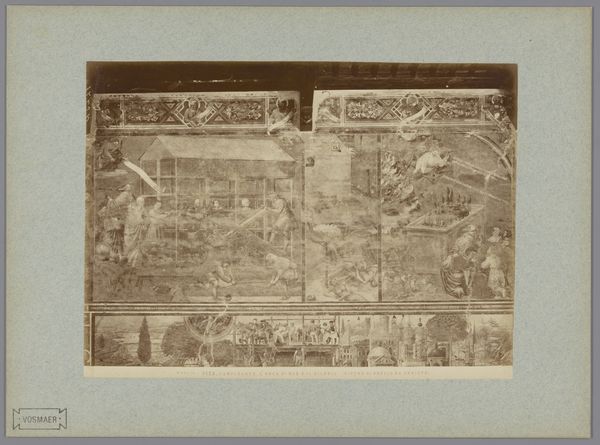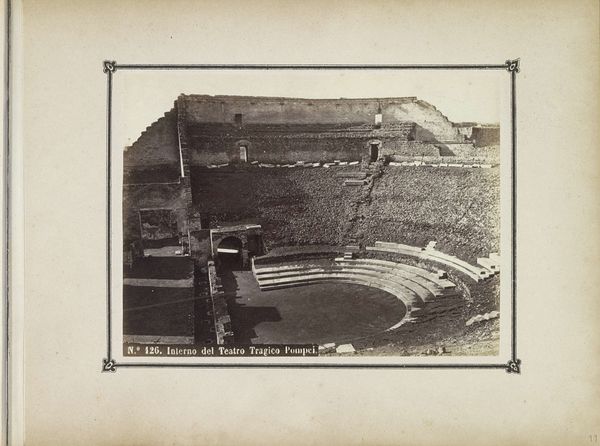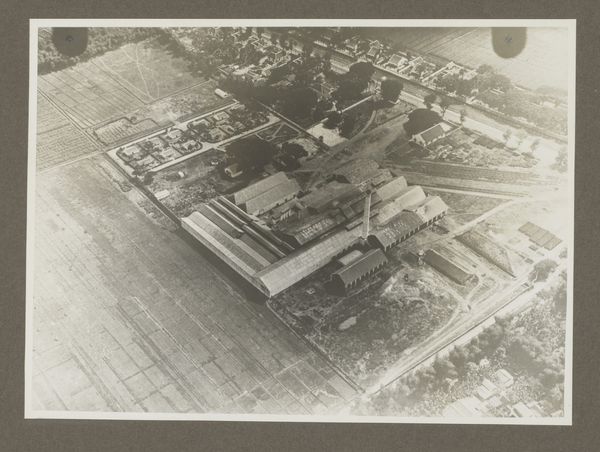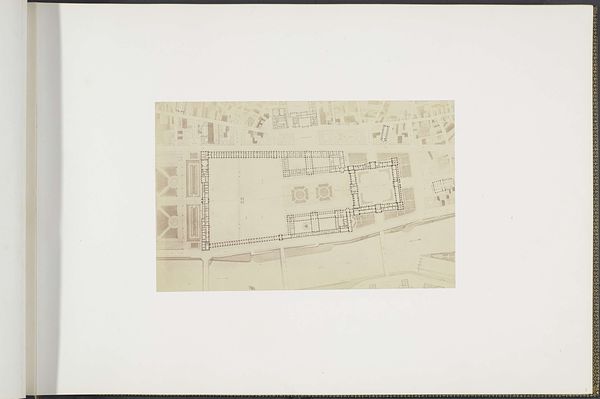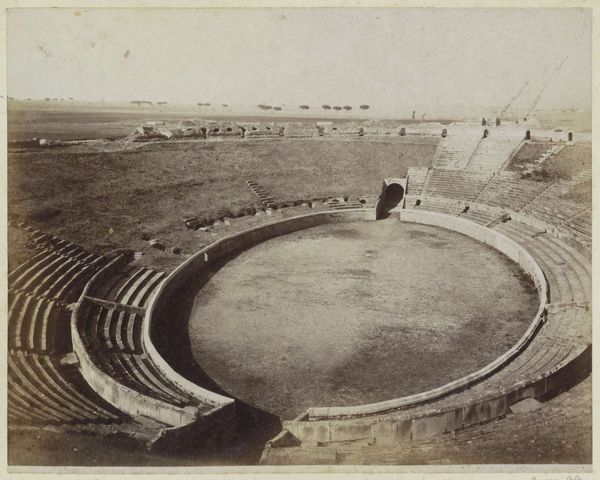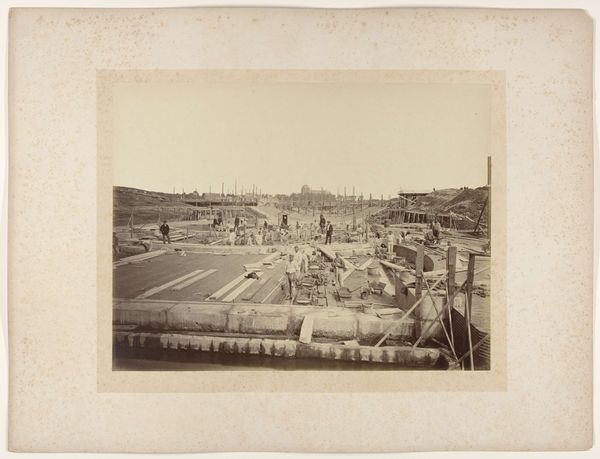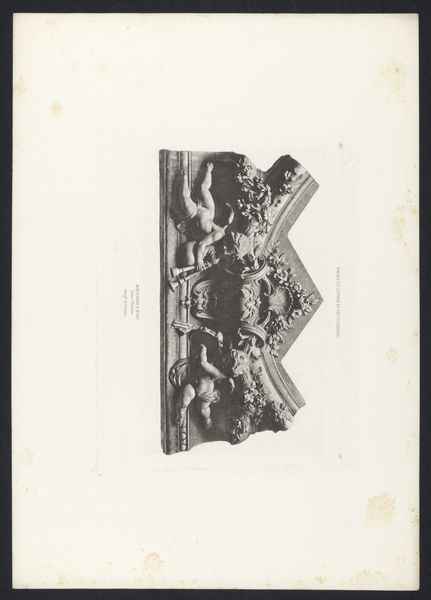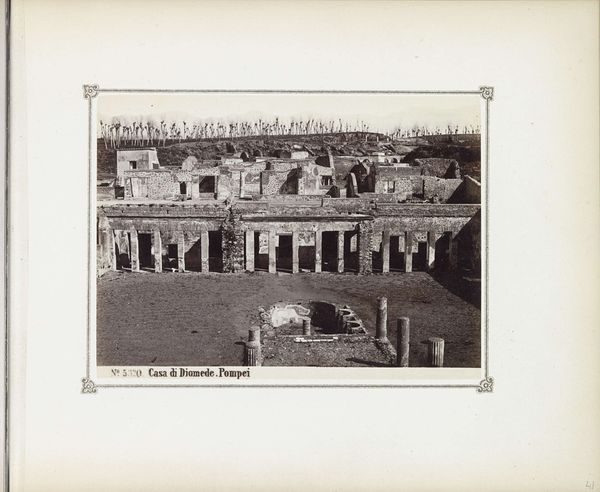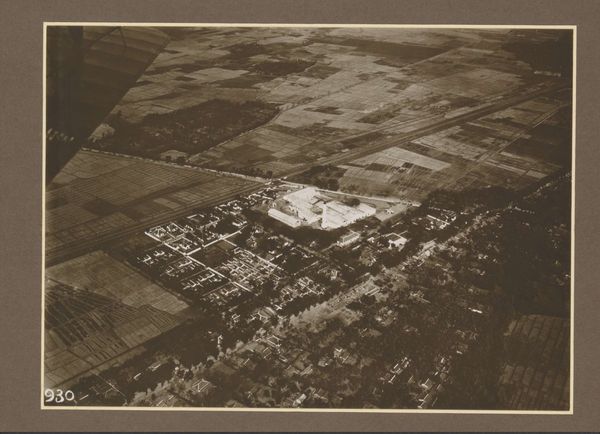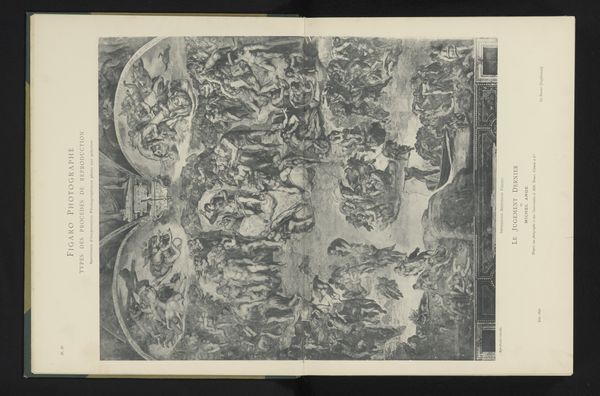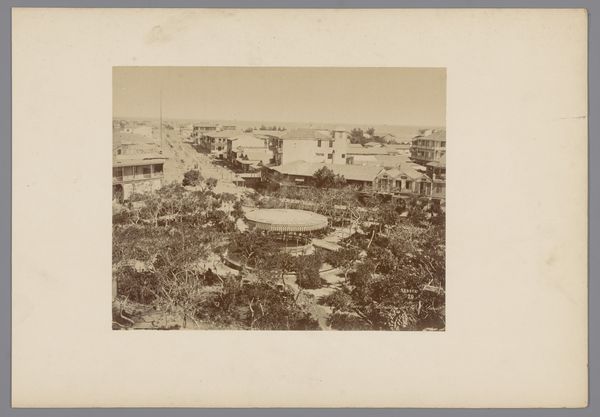
Dekplaat in reliëf en baksteen op het graf van gouverneur-generaal Hendrick Zwaardecroon in Batavia c. 1920
0:00
0:00
photography, sculpture
#
portrait
#
stone
#
sculpture
#
photography
#
sculpture
#
cityscape
Dimensions: height 248 mm, width 305 mm
Copyright: Rijks Museum: Open Domain
Curator: At first glance, I see textures and weathered surfaces in this photographic depiction of a gravesite, exuding a muted sense of melancholy through the sepia tones. What strikes you immediately about this piece? Editor: Well, beyond the palpable sense of history, the organization of space here intrigues me. The stark geometry of the brickwork plays off the circular and rectilinear designs on the grave marker. Curator: That interplay is fascinating, yes. What we have here is a photograph, likely circa 1920, depicting the decorated gravestone of Hendrick Zwaardecroon. The inscription notes that the scene is in Batavia, today known as Jakarta, where he served as governor-general. It seems that the gravesite serves almost as a miniature city-scape, marking a Dutch presence in the former colony. Editor: That resonates! See how the horizontal brick lines emphasize an almost topographic sensibility? It visualizes space in the form of cultural record keeping; and the handles – visually compelling – suggest literally, "hands-on" memorialisation. They almost beg to be touched, connecting past with the viewer in time. Curator: Precisely, a powerful connection is built between present observers and the legacy of the colonial figure buried there. The symbols likely carried deep meaning in both Dutch and Indonesian society, even representing the continuity and clashes of those cultures. Consider how portraiture evolved over this period, incorporating indigenous themes as well as Western, emphasizing an idea of colonial order but never able to fully subdue it. Editor: Absolutely. The framing, that specific arrangement, evokes semiotic potential far beyond a mere memorial image. This photographic treatment—with the angles, the weathered patina—contributes much more, offering visual signifiers of permanence in this representation. Curator: Thinking about this work's psychological resonance, it's impossible not to confront the complicated nature of colonial histories. Such sites bear the weight of multiple perspectives; grief intermingling with historical culpability, legacy and dispossession. Editor: Yes, what a thought-provoking demonstration of how intrinsic pictorial organization enhances meaning. From color tone and plane arrangement we deduce how even this gravestone's image generates dynamic narratives around time and history. Curator: I completely agree; there's so much depth when viewing a single photograph, especially considering the web of narratives such locations carry within our collective cultural memory. Editor: Definitely. The careful orchestration of compositional features ensures this historical marker remains potent today.
Comments
No comments
Be the first to comment and join the conversation on the ultimate creative platform.
